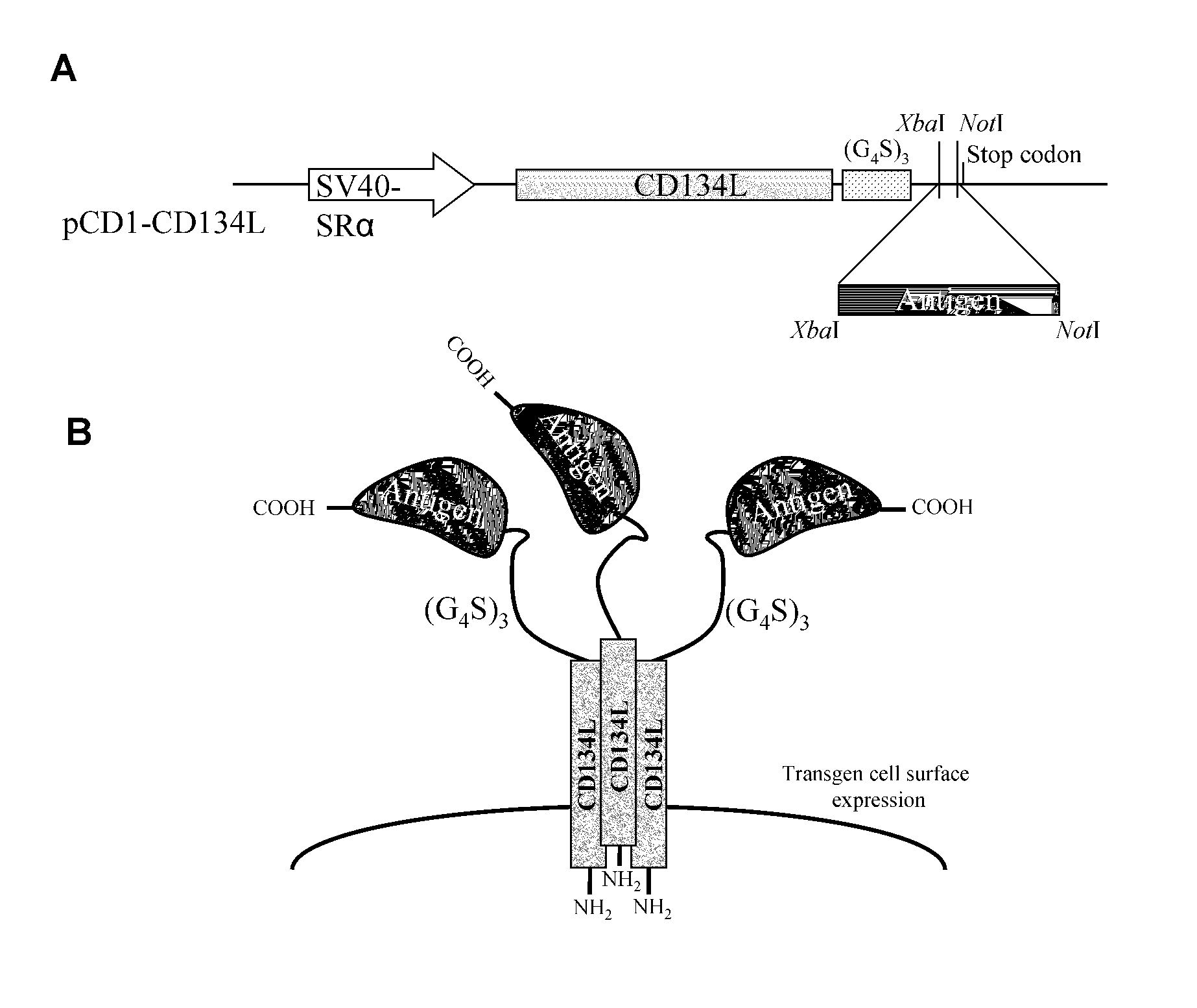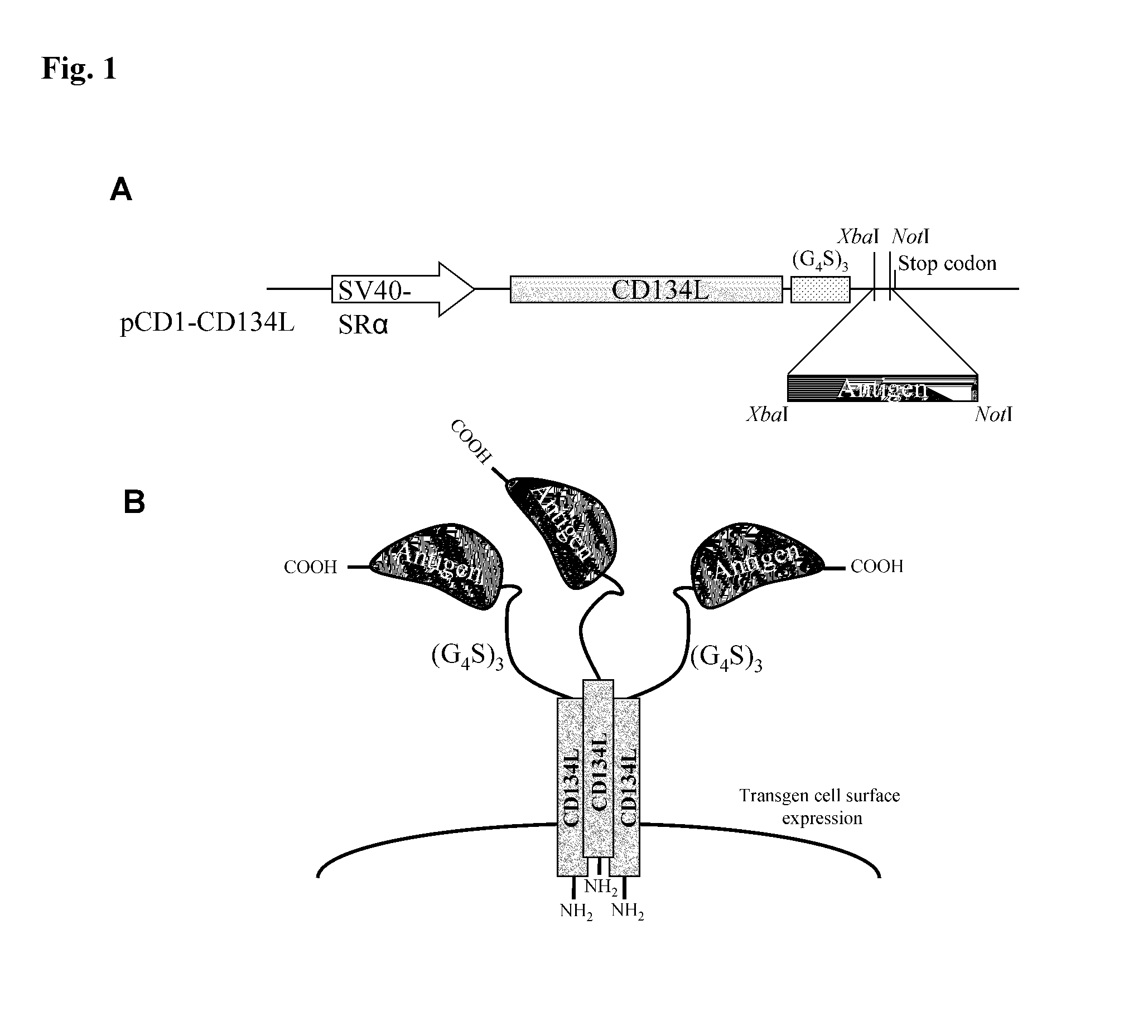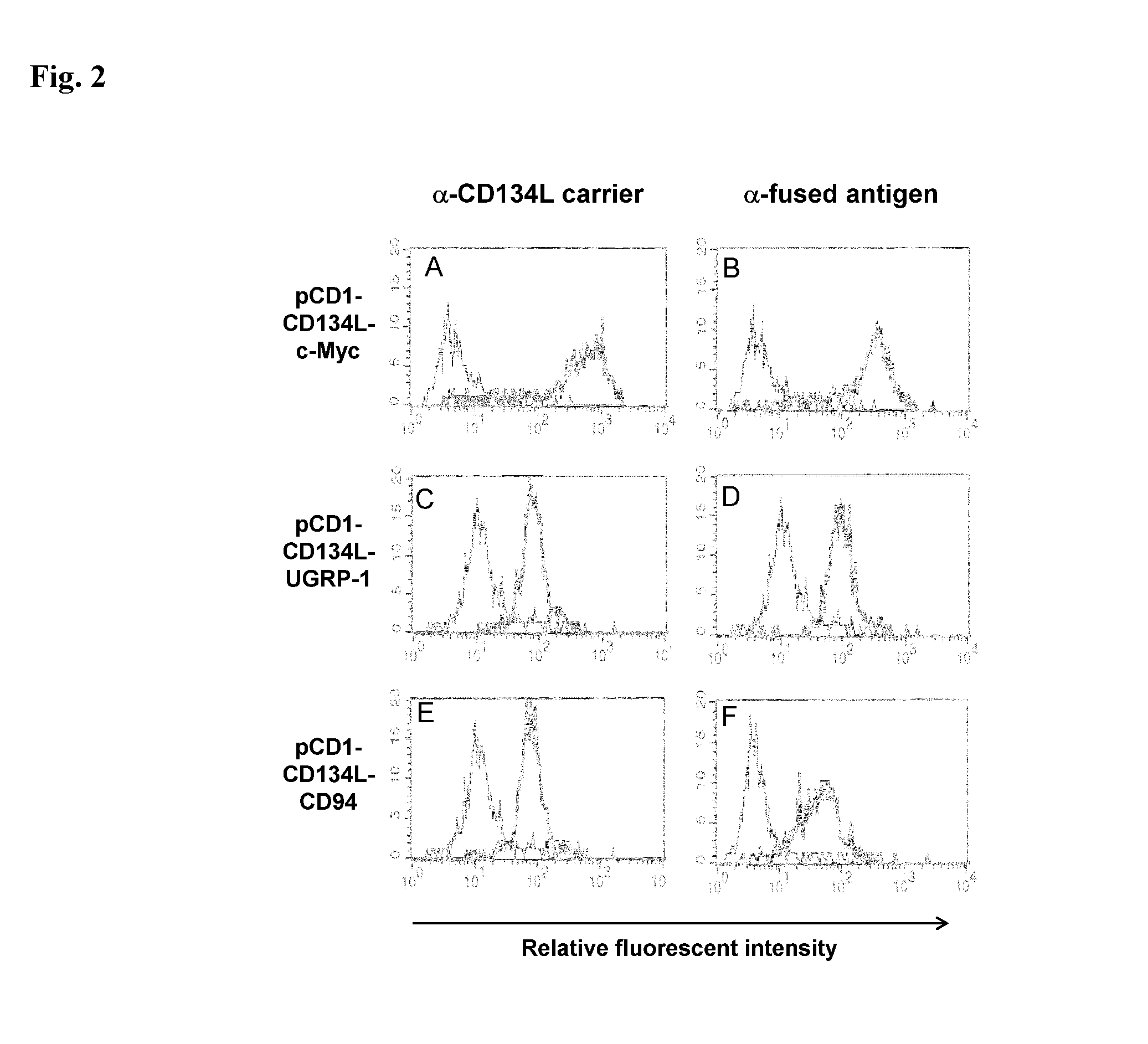Method for producing antibody using “naked” expression vector expressing type II transmembrane fusion protein
a technology of transmembrane fusion protein and expression vector, which is applied in the direction of immunoglobulins against animals/humans, immunoglobulins against cytokines/lymphocytoses/interferons, peptides, etc., can solve the problems of no antibody generation, low titer of generated antibody, and large amount of purified antigenic protein
- Summary
- Abstract
- Description
- Claims
- Application Information
AI Technical Summary
Benefits of technology
Problems solved by technology
Method used
Image
Examples
example 1
Preparation of an Expression Vector
[0103]An expression vector, referred to as “pCD1-CD134L” was constructed in order to determine if CD134L could be used as a carrier for the cell surface expression of antigens which have been bound to its carboxy terminus.
[0104]To construct this vector, pCD1 was used. pCD1 is a derivative of pEBS-PL, taught by Bontron, et al., Mol. Cell. Biol., 17:4249-4258 (1997), incorporated by reference, which encodes a β-lactamase gene to permit bacterial selection, and “hph76,” which is a gene which provides hygromycin resistance, driven by the SV40 early promoter.
[0105]To prepare the expression vector, cDNA for human type II transmembrane protein CD134L cDNA, as taught by Miura, et al., Mol. Cell. Biol., 11:1313-1325 (1991), incorporated by reference in its entirety, followed by a (G4S)3 coding linker, an XbaI / NotI cloning site, and a stop codon, were inserted downstream of the SR alpha promoter (Takebe, et al., Mol. Cell. Biol., 8:466-472 (1988)), using Sal...
example 2
Preparation of Nucleic Sequences Encoding the Antigenic Moiety
[0108]This example elaborates on the antigens referred to supra. Portions of 5 different antigens were cloned using PCR into the pCD1-CD134L vector. Specifically, cDNA encoding amino acids 410-419 of c-Myc; 21-93 of UGRP-1, 36-179 of CD94, 17-413 of tick calreticulin (“IRCAL”), and 48-87 of Vaccinia virus A56 were cloned into the vector described supra, using the primers of SEQ ID NOs: 5-17. These primers were designed to create XbaI and NotI restriction sites at the 5′ and 3′ ends, in order to clone them in frame with the (G4S)3 linker.
[0109]In detail, a cDNA encoding Ixodes ricinus calreticulin (IRCAL) (Xu et al., J Parasitol 91, 1326-31 (2005)) was produced by RT-PCR reactions on mRNA purified from tick salivary glands as described elsewhere (Daix et al., Insect Mol Biol 16, 155-66 (2007)). RT reactions were performed on 150 ng of I. ricinus salivary gland mRNA using SuperScript III First-Strand Synthesis System for RT...
example 3
Immunofluorescent Staining of Cells Transformed with the Construct
[0113]Following the cell selection described supra, hygromycin resistant cells were tested to determine if they expressed CD134L and the fused antigen on their surfaces.
[0114]Indirect immunofluorescent stainings were performed on three types of samples: cells in suspension, cell monolayers grown on glass coverslips and micro-dissected tick salivary glands. All types of samples were fixed in phosphate-buffered saline (PBS) (PBS: 3 mM KCl, 1.5 mM KH2PO4, 0.14 M NaCl, 6.5 mM Na2HPO4, pH 7.2) containing 4% (w / v) paraformaldehyde (Merck) for 15 min on ice and then 30 min at room temperature. Where indicated, after washing with PBS, the samples were permeabilized in PBS containing 0.1% (w / v) NP40 (Fluka) for 20 min at 37° C. Immunofluorescent stainings (incubation and washes) were performed in PBS containing 10% (v / v) FCS (PBSF). The samples were incubated at 37° C. for 45 min with primary antibodies. The following primary ...
PUM
| Property | Measurement | Unit |
|---|---|---|
| pH | aaaaa | aaaaa |
| nucleic acid identity | aaaaa | aaaaa |
| length | aaaaa | aaaaa |
Abstract
Description
Claims
Application Information
 Login to View More
Login to View More - R&D
- Intellectual Property
- Life Sciences
- Materials
- Tech Scout
- Unparalleled Data Quality
- Higher Quality Content
- 60% Fewer Hallucinations
Browse by: Latest US Patents, China's latest patents, Technical Efficacy Thesaurus, Application Domain, Technology Topic, Popular Technical Reports.
© 2025 PatSnap. All rights reserved.Legal|Privacy policy|Modern Slavery Act Transparency Statement|Sitemap|About US| Contact US: help@patsnap.com



